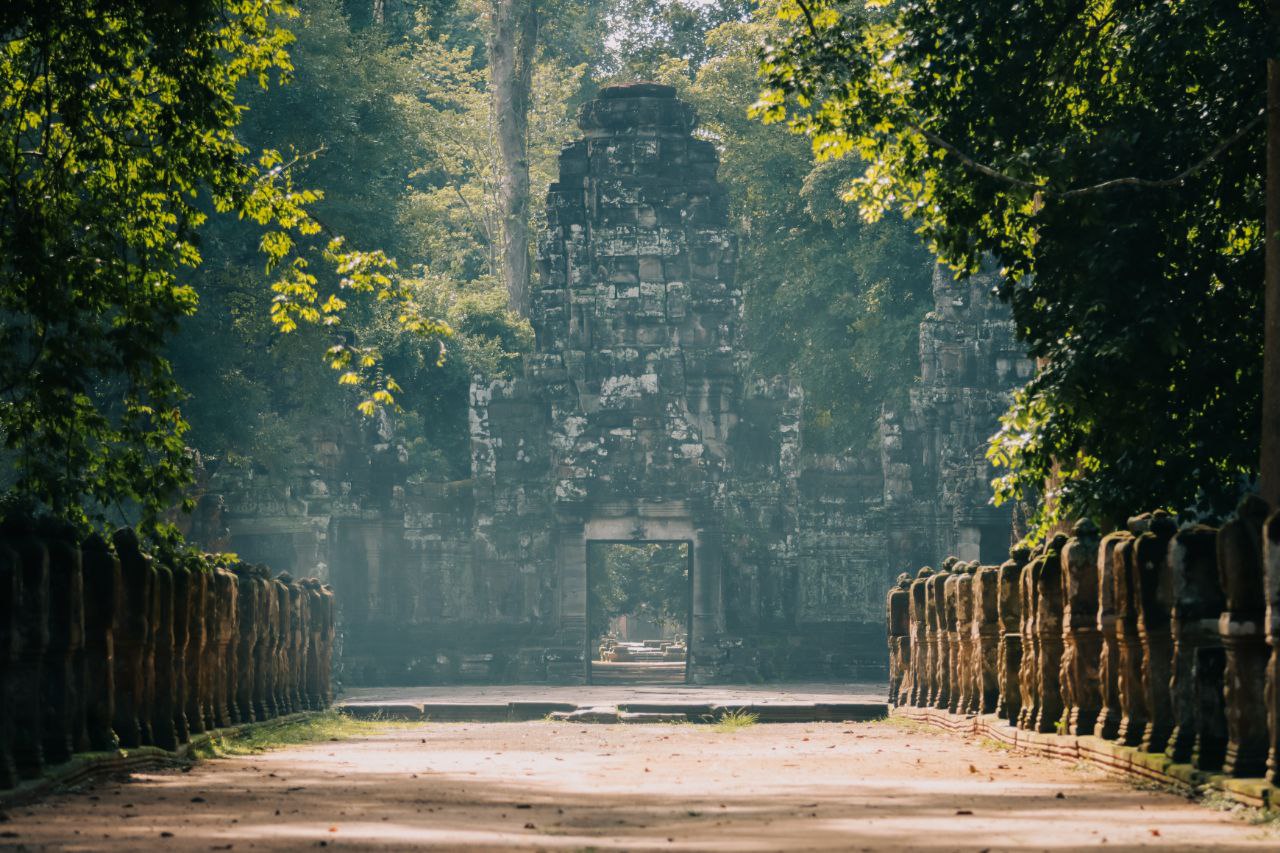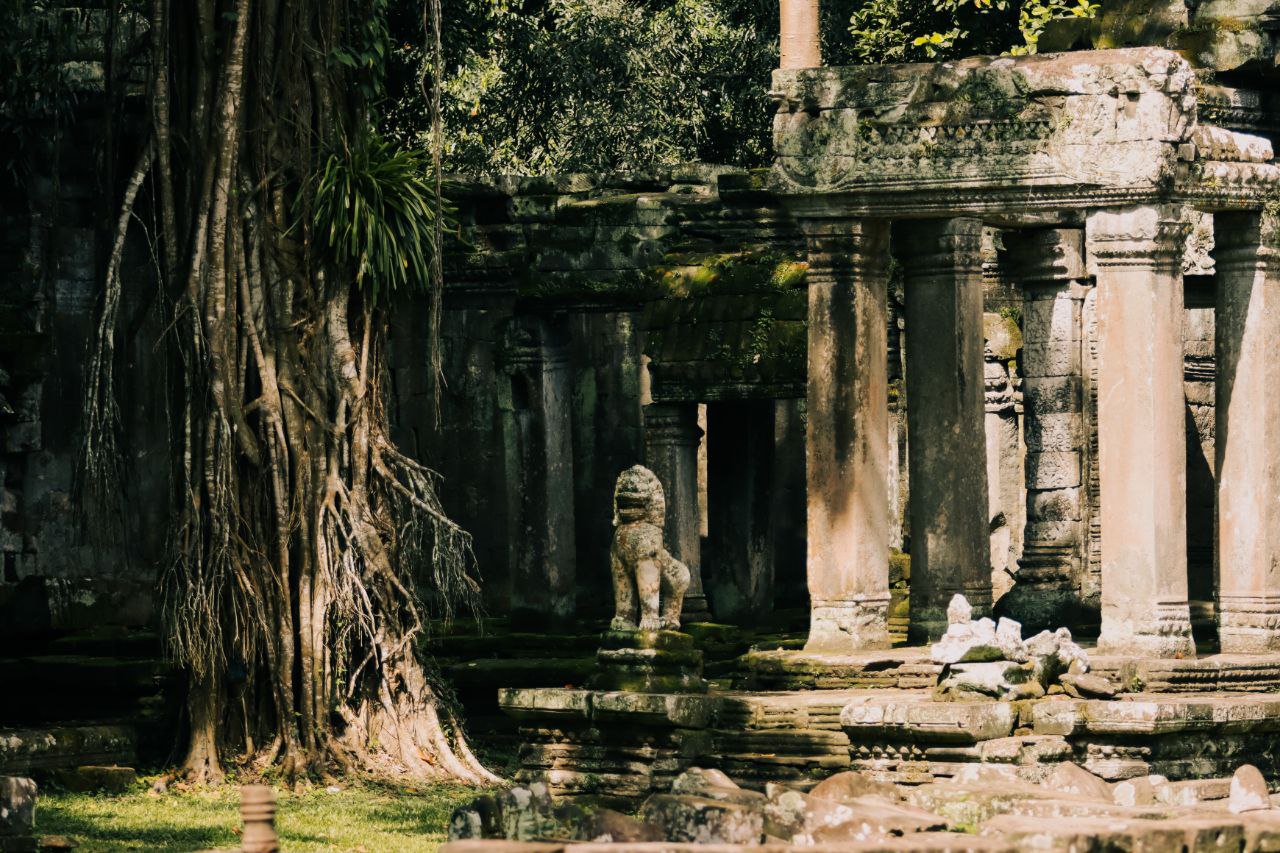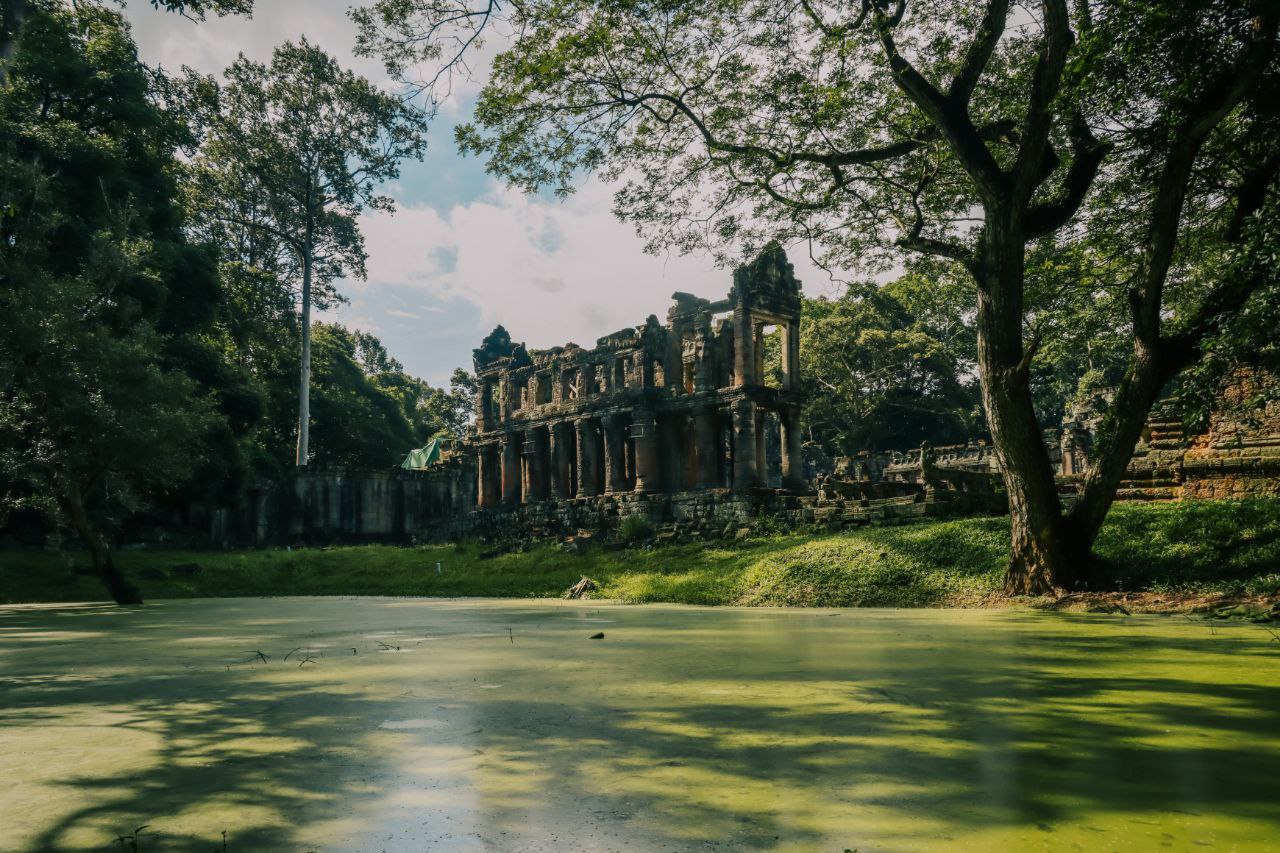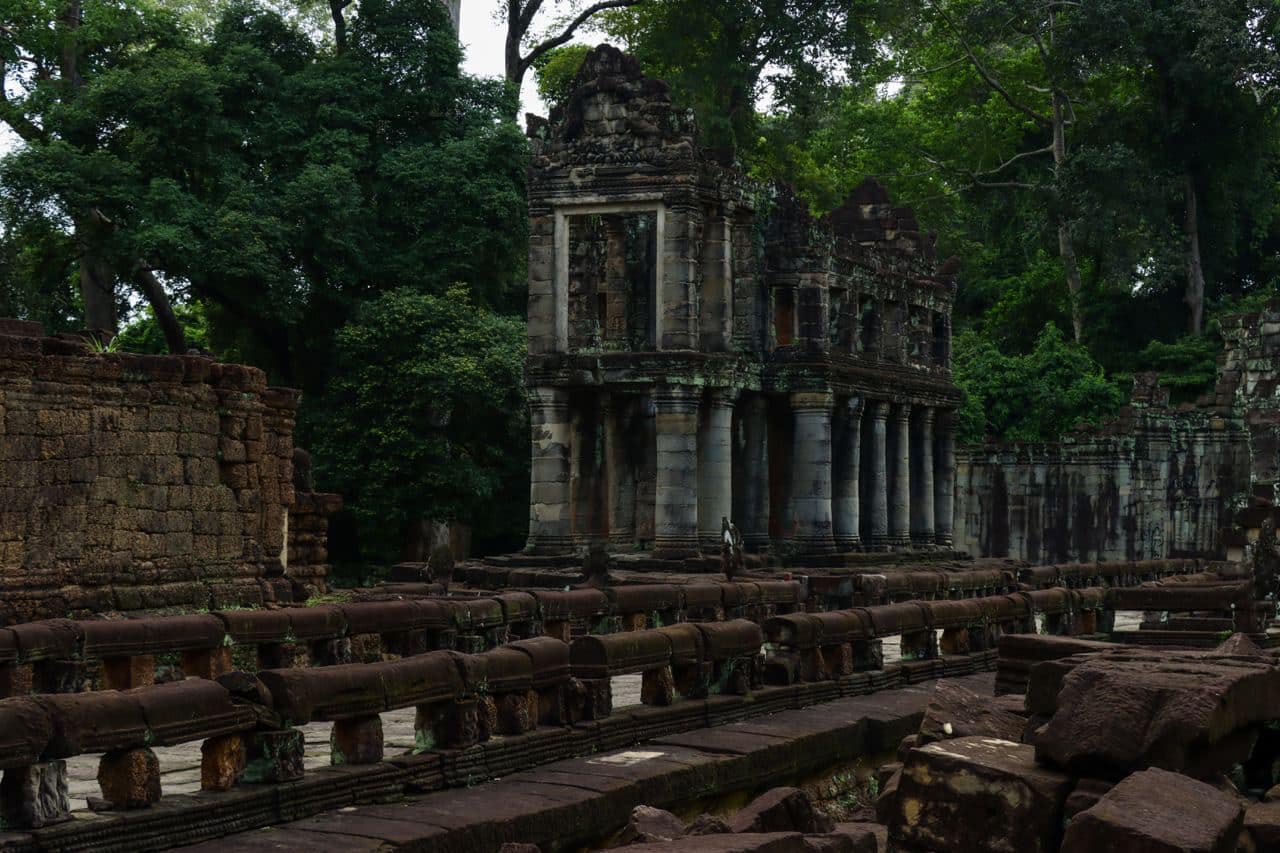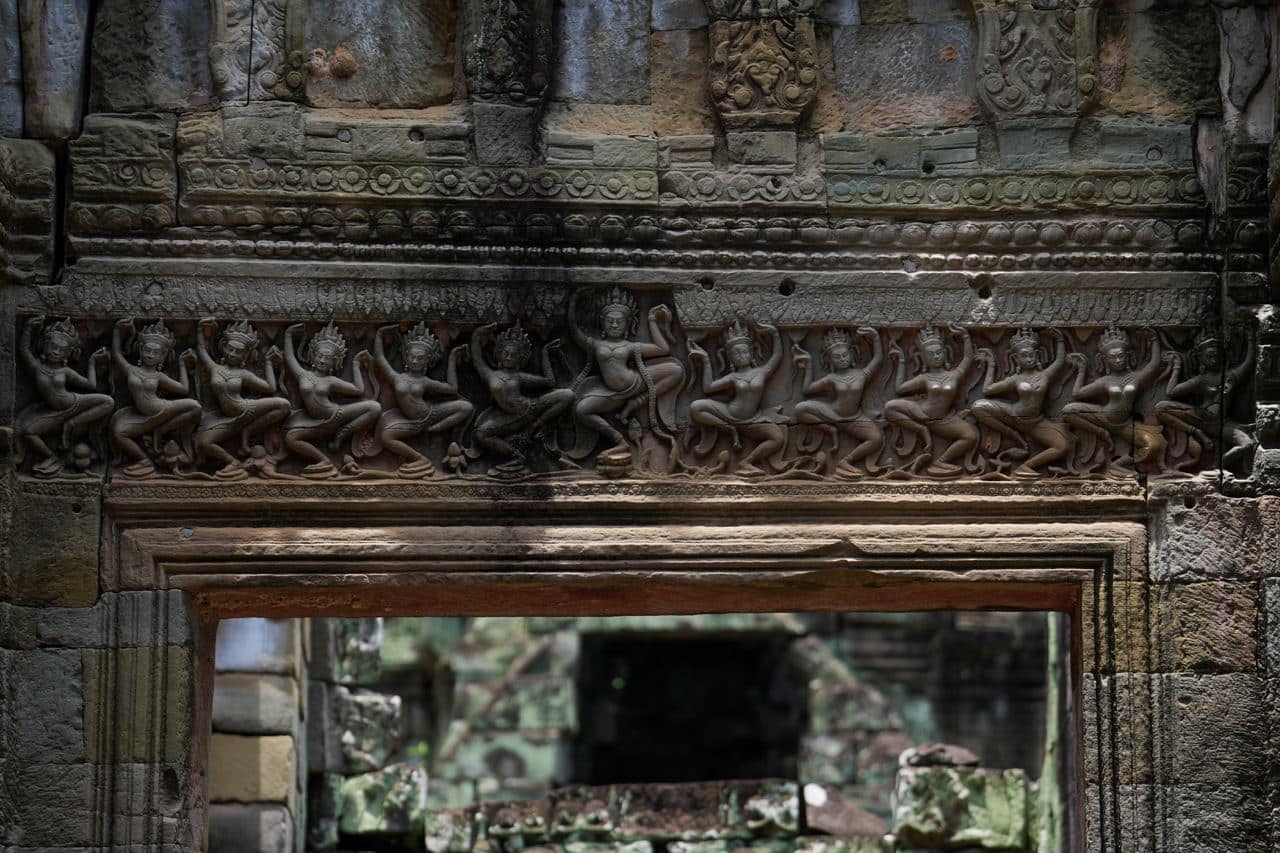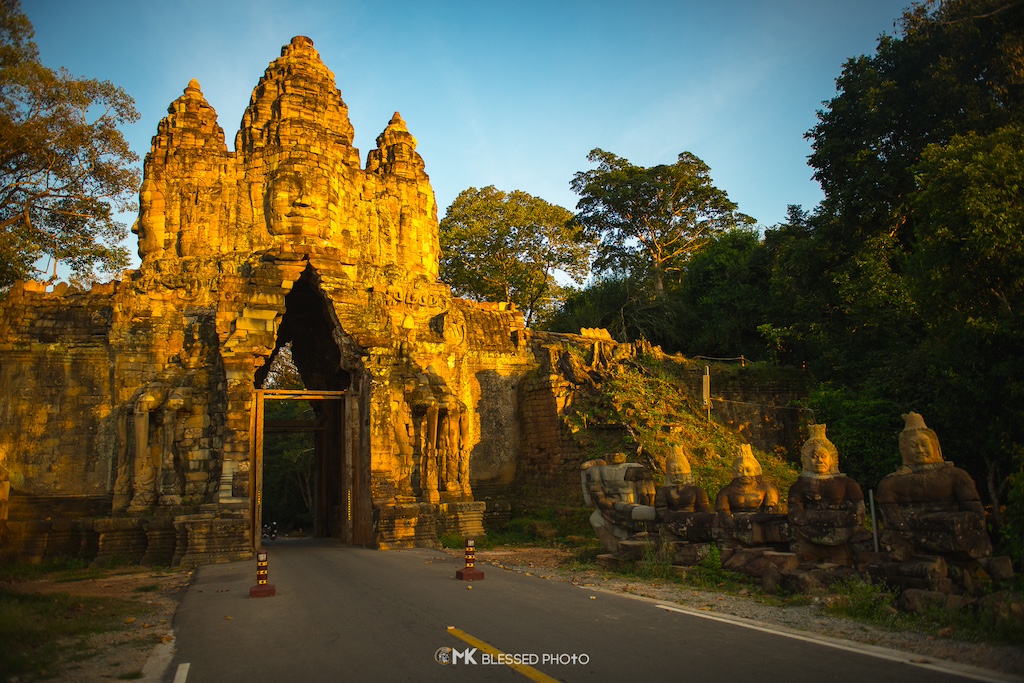PreahKhan: A Journey Through Ancient Hallways and Timeless History
Preah Khan, meaning 'Sacred Sword,' is one of the most significant temples in the Angkor Archaeological Park. Built-in the 12th century by King Jayavarman VII, it served as a Buddhist monastery and school, making it an important cultural and religious center of its time. Spanning a vast area, this temple complex harmoniously blends historical significance with a serene, mystical ambiance. The temple is unique for its intricate bas-reliefs, large corridors, and labyrinthine structure. It was built on the site of Jayavarman VII's victory over the invading Chams and has been revered as a symbol of Cambodia's resilience and strength.
Major Sight Spots in Preah Khan:
The Main Entrance (Eastern Gate): Adorned with carvings and statues, it provides a grand entry to the temple.
Hall of Dancers: Named for the beautiful carvings of apsaras (celestial dancers) that decorate its walls.
The Central Sanctuary: Once housing a significant statue of Boddhisattva Avalokiteshvara, now characterized by its towering pillars and serene ambiance.
The Two-Story Building: A unique architectural feature in Angkorian temples, possibly used for religious rituals or as a library.
The Garuda Carvings: Impressive carvings of Garuda, a mythical bird, adorn the outer walls, warding off evil spirits.
The North and West Gopuras: These gates feature intricate carvings and give access to different parts of the temple.
Preah Khan Baray (The Sacred Reservoir): A large ancient reservoir located to the northeast, reflecting the temple's sophisticated water management system.
As visitors wander through the maze of vaulted corridors and courtyards, they are treated to a mix of semi-ruined state and partially restored structures, giving a sense of the temple's past grandeur. The overgrown trees and sprawling roots add to its charm, creating a feeling of discovering a lost world.
Preah Khan is a testament to the ingenuity of the Khmer Empire, showcasing their architectural, artistic, and spiritual prowess. It offers a more tranquil alternative to the often-crowded Angkor Wat and Ta Prohm, allowing visitors to immerse themselves in the peaceful ruins and ponder the mysteries of the ancient world.


